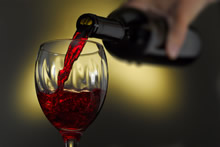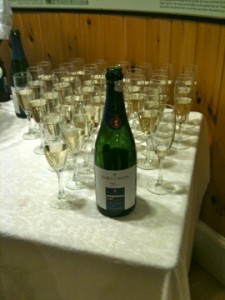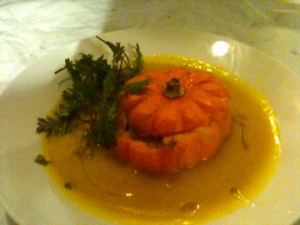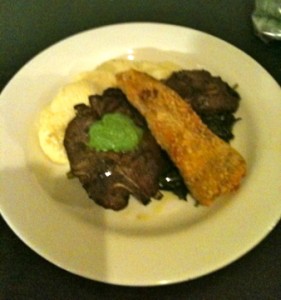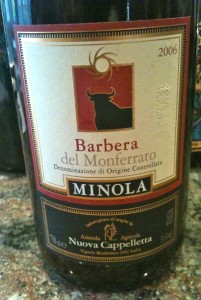Thanksgiving has come and gone and the holiday season is officially upon us. This year, why not put some teeth in the toast “to your health” and pour some green wines for your celebrations? Organic, biodynamic and sustainably farmed wines are great choices for our health and the health of our planet – definitely reasons to celebrate. Below is a list of sixteen of our favorite sparklers, whites, reds and dessert wines in a range of prices.
Champagnes and Sparklers:
Sparkling wines are a wonderful choice to begin any celebration. The bubbles are beautiful and festive and the high acidity helps refresh the palate between bites, making them the perfect companions to assorted canapés. I prefer my bubbly with oysters or cheese, but it goes equally well with sushi, salty foods and fatty foods.
Champagne Fleury Rosé Brut NV, France ($52) – the first and largest biodynamic producer in France, this estate grows pinot noir almost exclusively, producing some wonderful rosé champagnes.
NV Larmandier-Bernier Premier Cru Vertus, France ($39) – biodynamic champagne made with 100% Premier Cru grapes, including a small amount of pinot noir in this otherwise chardonnay dominant area.
Can Vendrell Cava Brut Reserva, Spain ($25) – organically grown grapes with hints of apple, pear and almonds. Made in the style of champagne.
Altana Rosato Frizzante Perlage, Italy ($15) – a pretty sparkler made from 100% cabernet sauvignon organically grown grapes.
Still Wines:
Bonterra Vineyards Rosé 2009, Mendocino County, California ($17) – a dry, fruity blend of grenache, zinfandel and sangiovese from this organic estate. Enjoy it with crudités, cheese or poultry.
Montinore Estate Borealis 2010 Willamette Valley, Oregon ($16) – a biodynamically farmed blend of müller-thurgau, riesling, pinot gris, and gewürztraminer that makes the perfect aperitif before a holiday meal. It also pairs beautifully with Asian dishes.
Cullen Kevin John Chardonnay, Margaret River, Western Australia 2007 ($62) – another luscious wine from a biodynamic king of chardonnay. This giant would feel right at home in the company of lobster bisque or a rich cream sauce.
Clos de la Coulee de Serrant 2009, France ($85)– Nicolas Joly, one of today’s leading proponents of biodynamic viticulture, has created a luxurious chenin blanc wine from Savennières in the Loire Valley. Rich, creamy and slightly sweet, this would pair well with a gamey bird.
Robert Sinsky Pinot Noir 2009, Los Carneros ($38) – fruit forward and food friendly, this biodynamic silken pinot noir would pair beautifully with holiday ham or salmon.
Domaine Jean Bousquet Malbec 2010, Tupungato, Mendoza ($13) – organic grapes are used to produce this dark and spicy wine with flavors of plums and chocolate. Perfect for pairing with meats and sauces.
Bodegas Luzon “Luzon” Jumilla 2009, Spain ($8) – wonderful example of monastrell for the price and organic, too. The perfect accompaniment to grilled pork or herb roasted meats.
Jean-Michel Stephan Cote-Rotie 2009, France ($65) – listed on Wine Spectator’s top 100 of 2011, this natural wine is 90% syrah and 10% viognier. Pairing this with a holiday prime rib would make even the Grinch smile.
Beckmen Vineyards Purisima Mountain Vineyard Grenache 2008, Santa Ynez Valley ($48) – a standout biodynamic estate creating gorgeous Rhone style wines. Bolstered with a modicum of syrah, this blend would be a beautiful bottle to pair with lamb. May I suggest pomegranate mint sauce?
Dessert Wines:
Sunset Meadow Vineyards Midnight Ice Vidal Blanc Ice Wine, Goshen, CT ($50) – end your meal with a burst of tropical flavors such as lychee, mango and passion fruit with this delicately sweet nectar produced at a sustainably farmed Connecticut winery. Try it with Spanish flan or crème brulee.
Kaori Umeshu Plum Sake Chugoku, Yamaguchi ($36) – infused with organic plums, this plum wine releases beautiful aromas of fruit. Slightly acidic and sweet and perfect served over ice. Vanilla cake or Bananas Foster would show this wine off nicely.
Port Finest Reserve Casal dos Jordoes, Portugal ($32)– a few years ago you would have been hard pressed to find more than one organic port. Now there are several to choose from. Made with organic distilled spirits as well as organic grapes, this port is unfined, unfiltered, and vegan. A decadent end to any meal, sip with a fig, cheese and walnut tart or anything chocolate.
